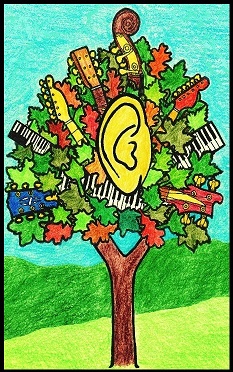 The question, “What is the true name of a musical note?,” sounds something like a Zen koan, except this koan has an obvious answer. It’s kind of like that time Bart Simpson obligingly demonstrated for his sister Lisa how to clap with only one hand.
The question, “What is the true name of a musical note?,” sounds something like a Zen koan, except this koan has an obvious answer. It’s kind of like that time Bart Simpson obligingly demonstrated for his sister Lisa how to clap with only one hand.
Lao Tzu started his treatise on the inner nature of everything by saying, “The Tao that can be told of is not the absolute Tao. The names that can be given are not absolute names.” Lao Tzu’s famous opener applies to music in a special way, because musical notes really do have two separate names – a given name, and an absolute name.
First, musical notes have the names we give them, whether “C,” or “Do,” or something else. But those given names are not their true, absolute names. Their absolute names are the pitches they are associated with.
If our spoken language had developed differently, it might have been based more on tones than on vowels and consonants. In that case, we might not have needed to give names to notes in order to talk about music. We need to give names to notes because the average person can’t sing well enough to refer to them only by their true, absolute names. And as we have already pointed out, humans have a natural sense of relative pitch, but most people don’t have a very good memory for particular pitches. That’s why most of us don’t have perfect pitch.
There’s a video on YouTube where Leonard Bernstein is conducting a keyboard concerto played by renowned concert pianist Glenn Gould. Like most concert pianists, Gould is not reading music during his performance. He has memorized the entire piece. You can also plainly see that he is singing the melody to himself as he is playing, to help him remember it.
He is connecting his memory of a complex melody together with his muscle memory, which he has developed through hundreds of hours of practice. The keyboard is laid out systematically, so he knows where each individual sound is located. He has worked out his strategy for how he will negotiate the piece with his fingers well in advance. In his mind, he hears the melody, and his fingers play it back on the piano.
First, he derived the letter names by reading them in staff. For a short time during the first phase of learning, his mental dialogue was a string of note names. But by the time he performs the piece, he relates to it in a different way than when he first read it. The clatter of note names in his head has been replaced by an auditory memory of the sound of the chords and melodies. Through practice, this auditory memory becomes synchronized with a corresponding muscle memory. It’s all about synchronizing your memory of sounds with muscle memory. This is what goes on in the mind of a performing musician.
© 2019, 2020 Greg Varhaug